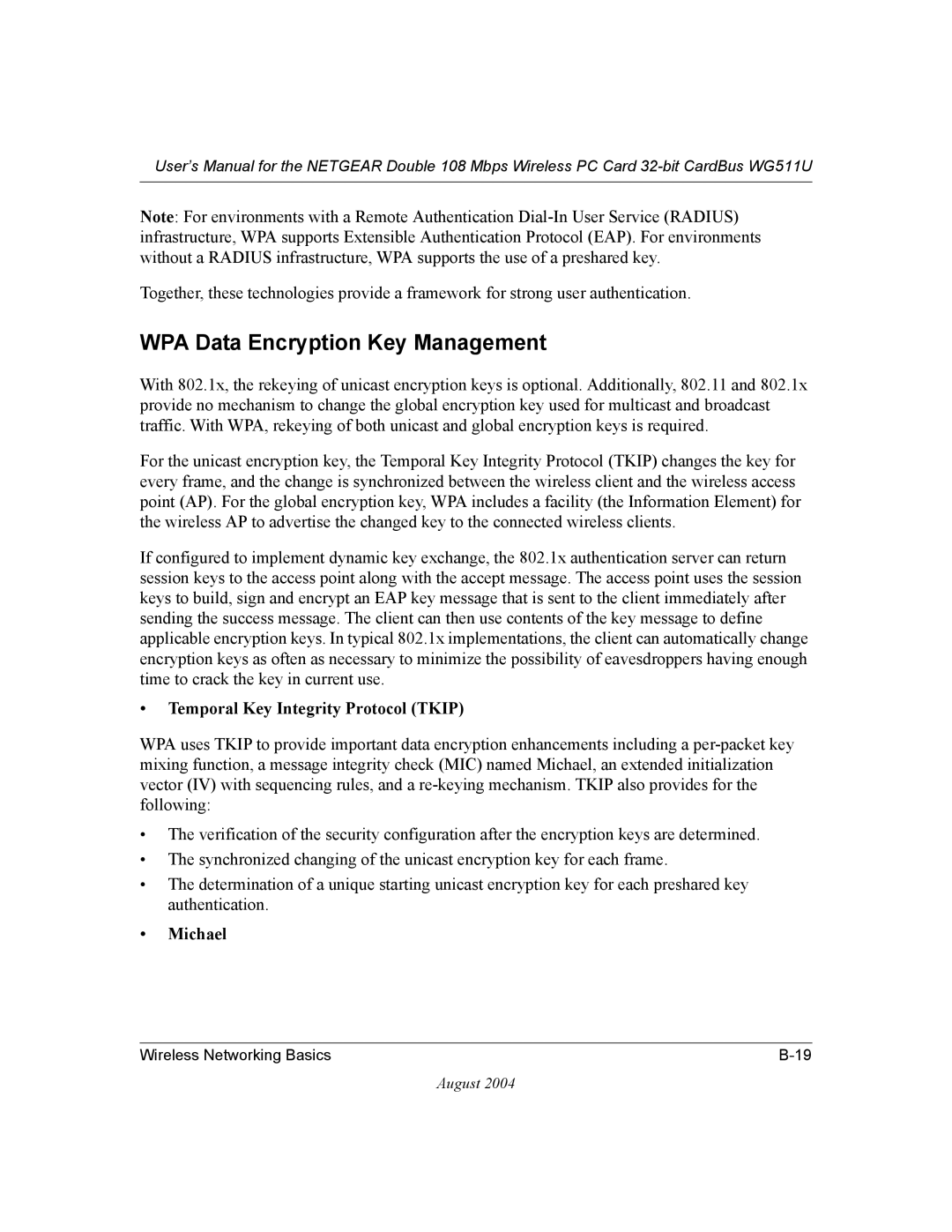
User’s Manual for the NETGEAR Double 108 Mbps Wireless PC Card
Note: For environments with a Remote Authentication
Together, these technologies provide a framework for strong user authentication.
WPA Data Encryption Key Management
With 802.1x, the rekeying of unicast encryption keys is optional. Additionally, 802.11 and 802.1x provide no mechanism to change the global encryption key used for multicast and broadcast traffic. With WPA, rekeying of both unicast and global encryption keys is required.
For the unicast encryption key, the Temporal Key Integrity Protocol (TKIP) changes the key for every frame, and the change is synchronized between the wireless client and the wireless access point (AP). For the global encryption key, WPA includes a facility (the Information Element) for the wireless AP to advertise the changed key to the connected wireless clients.
If configured to implement dynamic key exchange, the 802.1x authentication server can return session keys to the access point along with the accept message. The access point uses the session keys to build, sign and encrypt an EAP key message that is sent to the client immediately after sending the success message. The client can then use contents of the key message to define applicable encryption keys. In typical 802.1x implementations, the client can automatically change encryption keys as often as necessary to minimize the possibility of eavesdroppers having enough time to crack the key in current use.
•Temporal Key Integrity Protocol (TKIP)
WPA uses TKIP to provide important data encryption enhancements including a
•The verification of the security configuration after the encryption keys are determined.
•The synchronized changing of the unicast encryption key for each frame.
•The determination of a unique starting unicast encryption key for each preshared key authentication.
•Michael
Wireless Networking Basics |
August 2004
